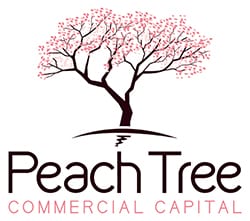There are very few businesses out there that are able to stay profitable every part of the year. Most businesses experience a season or two of profit and success, and then have to use the money they made during that time to make it through the rest of the year, when earnings drop off. Others have to deal with large upfront costs that are followed by long waiting periods before the money rolls in to pay them off. Still others don’t even make money until the holiday season kicks in.
Managing your cash flow and your bottom line in an inconsistent environment like this can be stressful, and often you have to find creative ways to stay above water until the profits start rolling in again. Businesses try various approaches to make ends meet during these leaner times. Strategies like restructuring, postponing outgoing payments, or offering discounts to increase your sales can sometimes be successful, but they can also have long-term impacts that end up creating more problems than they solve.
A Different Option
Rather than try these risky alternatives, another option is to seek financing to help get your company through this lean period. To some, this seems to be just as risky — we’ve all heard stories about business owners who take out credit only to continue falling short until finally going out of business. This is why it’s important to make sure to work with lenders that start with a full financial picture and who understand the cyclic nature of your business.
Once you’ve found the right financier, there are several different ways that they can provide you with the cash you need right now to stay afloat until business turns around. Here are three of the most common methods:
Factoring
One common method of managing cash flow is known as factoring. Factoring is a process wherein a business sells its various accounts receivable invoices to a third party.
Let’s think about how this can be helpful. Let’s say you are waiting for payment on an invoice for $10,000. The person who owes that money doesn’t seem to be in any hurry to pay it off, and you need the cash now as your expenses are continuing to accrue.
This is where factoring comes into play. By selling this invoice to a third party for a predetermined amount, you can get the money you need now. Even better, you don’t have to worry about this invoice anymore, as the headache of trying to collect has now been passed on to the company that bought the invoice.
Of course, that company isn’t doing this out of the goodness of its heart. However much you sell the invoice for, you can bet it won’t be for the same amount as it’s worth. So, you might get the money now, but you won’t receive the amount of the entire invoice. Meanwhile, if the third party can get the debtor to pay in full, they make a little bit of a profit in the long run.
Still, when you’re facing a shortfall, factoring can be a quick way to bring in some much-needed cash.
Hard Money Loan
A hard money loan is a specific type of loan that a financier may offer when a piece of property is put up as collateral. While this type of loan is prevalent in things such as real estate deals, they can be useful in any business — provided that you, as the owner, are willing to put your property on the line should things not pan out.
The difference with this loan versus, say, a traditional commercial real estate loan, is that hard money loans are easier to get, which means they come in quicker when you really need the money to stay afloat. They also typically have higher interest rates, so they are not the sort of loans you want to take on long-term. But, again, if your business just needs a shot in the arm until a more profitable season, a hard money loan can bridge the gap.
Line of Credit
A line of credit is just what it sounds like — you are given an open line of money to borrow from as you need, and when you need it. The terms are set before hand as far as how much you can borrow, what your interest rate is, how long you can borrow from it before it is closed off and what sort of repayment options you have. The great thing about this option is that you only borrow what you need, so unlike a hard money loan, where you get a set amount and maybe you need it all, maybe you don’t, you end up only paying interest on what you actually use.
A line of credit requires the credit history and the cash flow to justify its approval, so this may be a more difficult option for a business in its first three years.
In Conclusion
As you can see, there are several different ways you can bring in some much-needed cash to help keep your business afloat during your lean times. When you have a growing concern, planning for the future while meeting the requirements of the present is your main responsibility as founder and owner.
At times like these, your loan broker becomes a trusted and valued partner in stabilizing your books. Call us today to discuss your business and see how we can help you manage cash flow throughout your business cycle.

